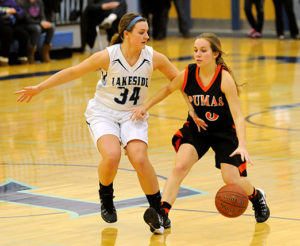Four point guard rules for attacking zone defense
Point guards need to know the difference between being a passer who hits the open player, and one who creates openings. Anyone can throw a pass to an open player, but the great point guards know how to find and attack openings, especially against a zone defense.
 When a point guard looks to attack a zone defense, there are four basic rules to follow. The first three are applicable to playing against any defense.
When a point guard looks to attack a zone defense, there are four basic rules to follow. The first three are applicable to playing against any defense.
1. Ball fake & grimace.
Being clever is part of being a successful point guard, especially if the point guard is small. When making a ball fake, instead of nonchalantly faking the ball, the point guard must really sell the fake to the point that the player makes a face to show that he or she really wanted the pass to go to that teammate.2. Engage two defenders.
If the point guard gets two players to guard just him or her, that leaves the offense in a 4-on-3 situation. Getting two players to engage doesn’t mean the point guard simply dribbles as fast and hard as possible into a double-team. The point guard needs to get close so two players are defending, but is not reckless in doing so.
3. Make triangles.
On every offensive possession, there is a point guard with the ball, two offensive players close to the ball, and two who are farther away from the action. Making triangles has to do with the two players closest to the ball. These players make equilateral triangles on the court with the nearest two defenders, which shows players how to get into gaps rather than just telling them to do so.
4. Use the ‘Dance Rule.’
For the two offensive players located farther away from the ball, they need to use the “Dance Rule.” These two are “dancing” back and forth in tandem with each other.
For example, as one player comes toward the ball (flashes), the other goes away and vice versa. Using this Dance Rule is critical in puncturing a zone. The point guard needs to know the best way to beat a zone is to get someone the ball in the middle instead of tossing it around the perimeter. The Dance Rule makes that happen by having one player move to the middle, while the other clears out to make space.









